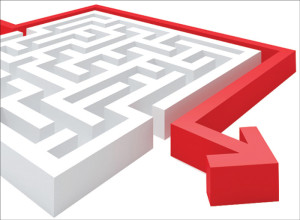Time-to-market is one of the most important parameters for any product’s success. It matters most for first-of-a-kind products and the companies are putting in great effort to reduce it. Design and prototyping is one of the largest phases in product development and a lot of time could be saved here by using ready development platforms. The time saved can help reduce time-to-market to a great extent and increase chances of the product’s success
Ankit Gupta
Time-to-market is the time taken from conception of a product to its launch in the market. There is no standard way to measure time-to-market and the definitions for start and end points of product development period vary greatly from one organisation to another.

In some organisations, development period starts when the product concept is approved. Others consider the start point when the project is fully staffed. Similarly, end point of the time-to-market period also varies from one organisation to another. Those who look at product development as engineering consider the end point when engineering department transfers the prototype to manufacturing. Others consider shipping of the first lot as the end point. High-volume industries often consider end point when a certain production volume is reached.
Organisations even have different approaches to reduce the time-to-market. Some think that time-to-market and product quality are opposing attributes of a development process. Time-to-market may be improved by skipping certain steps of the development process, thus compromising product quality. These organisations use highly structured development processes such as phase-gate model or Six Sigma, and often view product development as a clearly defined sequence of steps to be followed. Skipping a step here means the quality has been compromised, which eventually increases time-to-market.
Other organisations operate more aggressively, recognising that not all steps need to be completed for every project. Furthermore, they actively apply tools and techniques that shorten or overlap steps, cut decision-making time and automate activities.
The product design and manufacturing cycle has different phases and the largest of them all is design and prototyping phase. Organisations use various techniques to save time on each phase. One method is to use development platforms to design and develop the product and finally realise the prototype. This saves a lot of time as you can skip the basic setup for your project.
As microcontroller is part of most electronics products these days, we will focus here on microcontroller development boards and how they speed up hardware and software development.
Why development boards?
Development board is basically a printed circuit board with circuitry and hardware on-board to facilitate experimentation with certain microcontrollers. These boards can save you from a lot of repetitive tasks. Imagine you want to work on a microcontroller-based project, but to be able to use a microcontroller, you have to set up a bunch of circuitry and hardware on your breadboard each time. Obviously, this is going to frustrate you, especially when there are portions that are going to be the same every time, such as the power circuit. Also, there are certain hardware circuits such as pushbuttons and LEDs that greatly aid in testing and debugging. Having all of the hardware and circuitry already assembled makes experimentation and general prototyping much easier.
If you build this basic setup yourself with a general-purpose PCB or breadboard, you can never be 100 per cent sure about the connections. Every time something does not work, you do not know whether it is because of the setup or the development you are carrying out. Thus a lot of time is wasted debugging the issue.
Also, if you plan to use SMD chips in the final product, building the basic setup becomes very time-consuming. You cannot build such a setup with general-purpose PCBs and have to design a dedicated PCB. A lot of time is wasted due to the lead times for manufacturing this PCB, sourcing components and assembly before you can really start with the development.
So it is better to use a suitable development board with ready interface and immediately start moving on with your project. These development boards can be used in multiple projects, so it is a one-time investment that will not hit your budget much.
Typically, components of a development board include:
1. Power circuit (typically, set up to run from a 9V/12V power supply)
2. Programming interface (to program the microcontroller through computer)
3. Basic input circuitry, like buttons
4. Basic output circuitry, like LEDs
5. Input/output (I/O) pins access (to be used for everything else such as motors, sensors and LCD screens)










